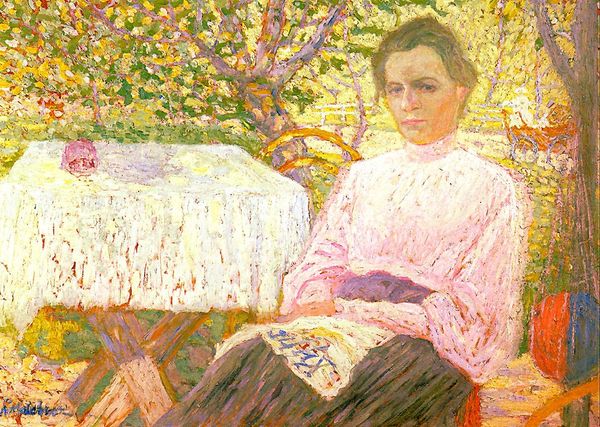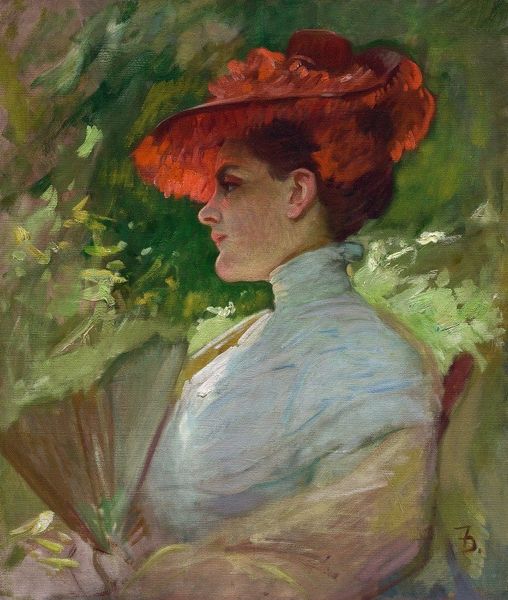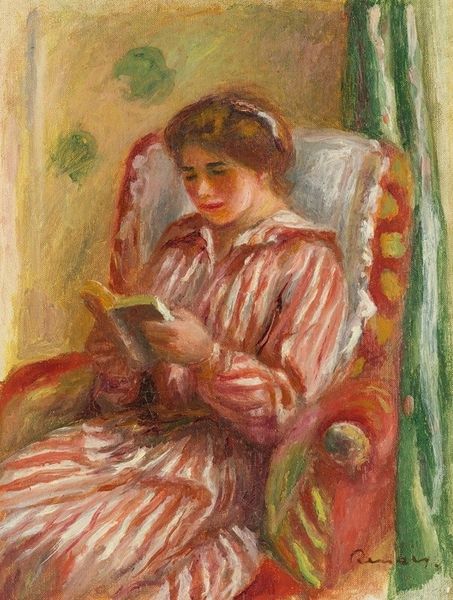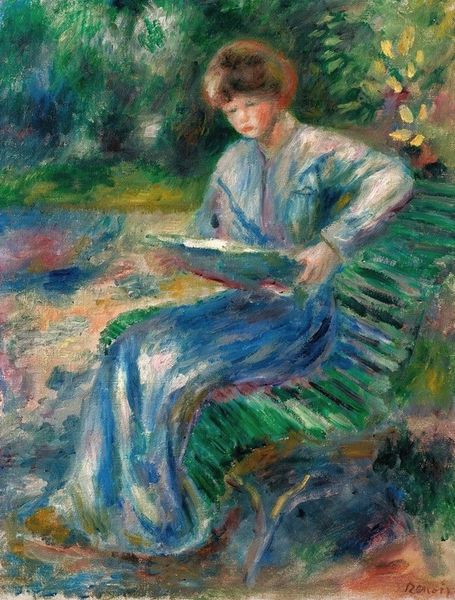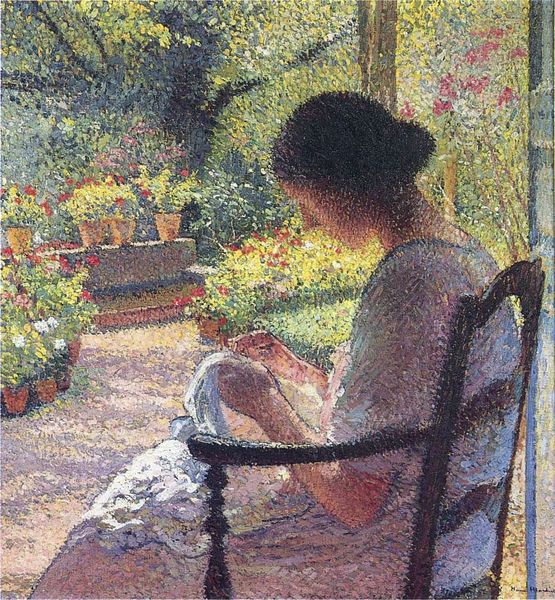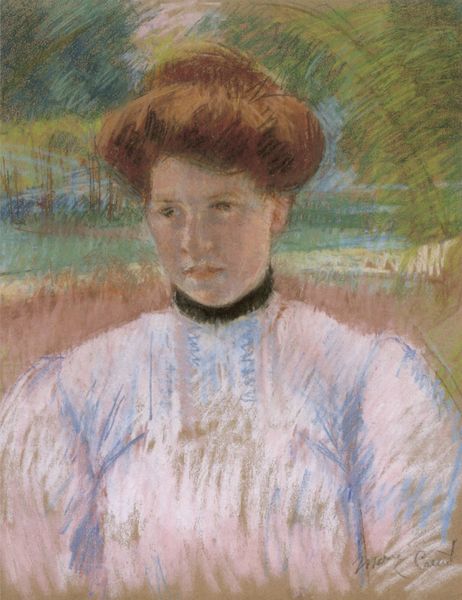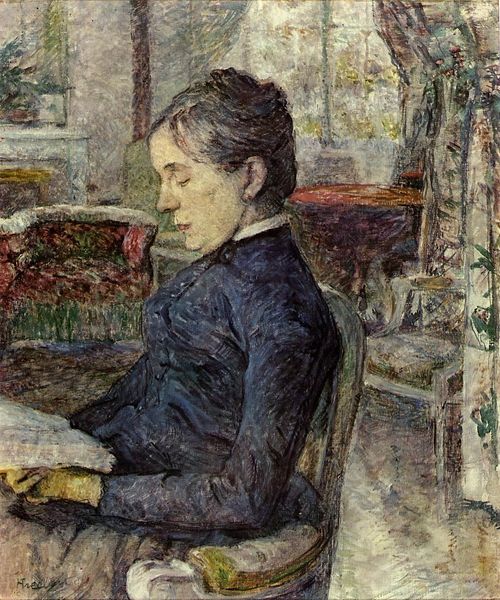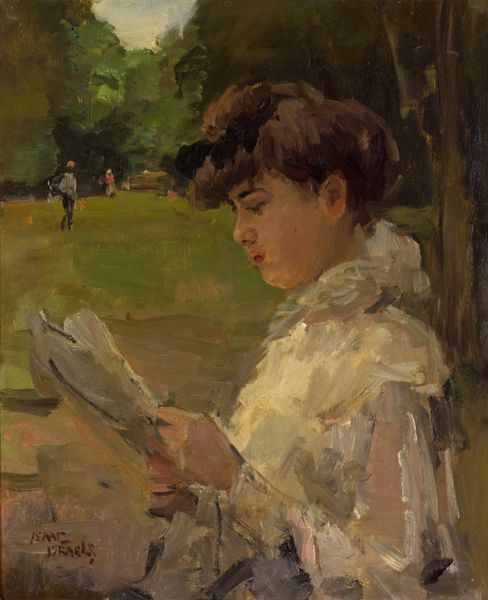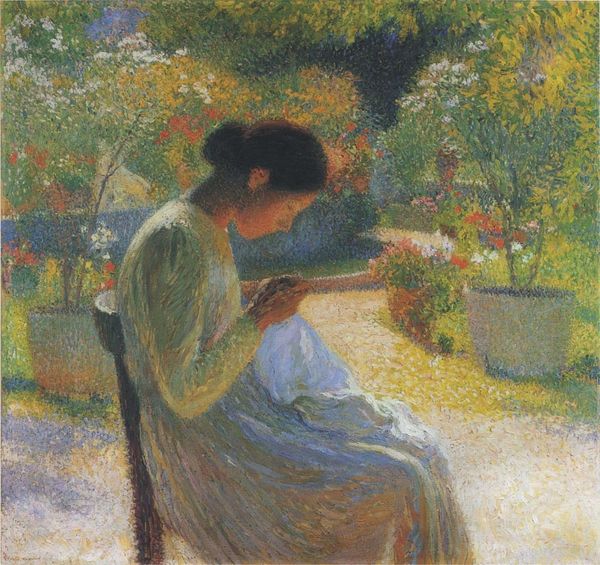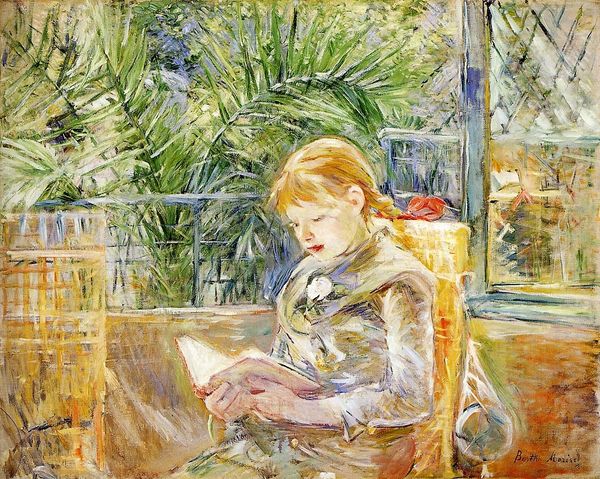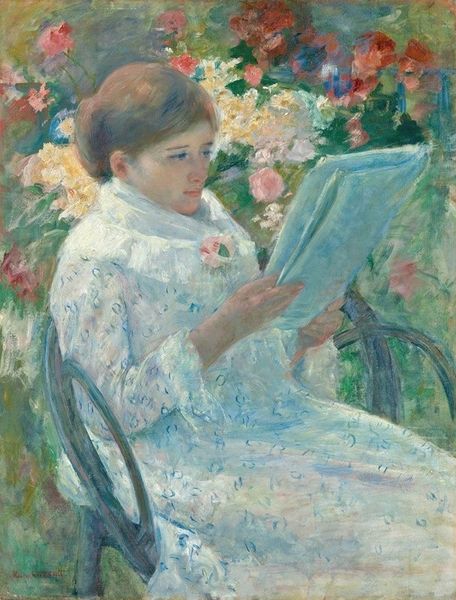
Copyright: Public domain
Curator: Before us, we have Childe Hassam's "Edith Blaney (Mrs. Dwight Blaney)", painted in 1894. Hassam's application of oil on canvas embodies the very spirit of Impressionism. Editor: The vibrant greens immediately grab your attention. There’s an almost dizzying effect, contrasting with the serene profile of the sitter. It feels…domestic, yet oddly unsettling. Curator: The formal structure presents a fascinating tension. The background, a lively field of floral motifs, flattens the pictorial space. This tension is a hallmark of Impressionist painting, creating a dialogue between surface and depth. Note the impasto technique used to render the blouse. Editor: That very blouse seems almost armor-like! The high collar and stiff fabric contrast with what seems like an intimate, leisurely setting. Perhaps it signifies societal constraints placed upon women of that era? Curator: Precisely. Observe also the placement of the figure. She is off-center, creating an asymmetry that pulls the eye across the composition. The color choices, too, play a significant role. The palette is restricted, focusing on greens and whites, punctuated by small spots of muted reds in the backdrop, constructing visual harmony within those subtle tensions. Editor: And that book, a splash of solid green amidst the textured whites, surely acts as more than a simple object. A representation of knowledge, perhaps, or maybe repressed self-expression allowed to flourish privately? The floral backdrop is visually compelling; it mirrors a kind of garden but might reflect an emotional wilderness in the sitter. Curator: That’s a perceptive reading, recognizing those inherent possibilities of semiotics in Hassam's carefully chosen imagery. The play of light across her face softens what might otherwise be interpreted as severe lines. He softens those geometric constraints of the setting, providing insight. Editor: Ultimately, Hassam gives us a glimpse behind a portrait; what’s captured has dual meanings. Edith appears pensive, caught between external expectations and a vivid inner world implied by Hassam. Curator: I agree. This work demonstrates a visual parsing of how late 19th-century American artists re-evaluated structure through a distinct interplay between form, color, and that suggestion of light that defines a portrait. Editor: The work lingers. It’s the mystery of the person captured more so than how it was achieved; Hassam reminds us that every portrait tells a complex narrative—one we can’t immediately resolve.
Comments
No comments
Be the first to comment and join the conversation on the ultimate creative platform.
